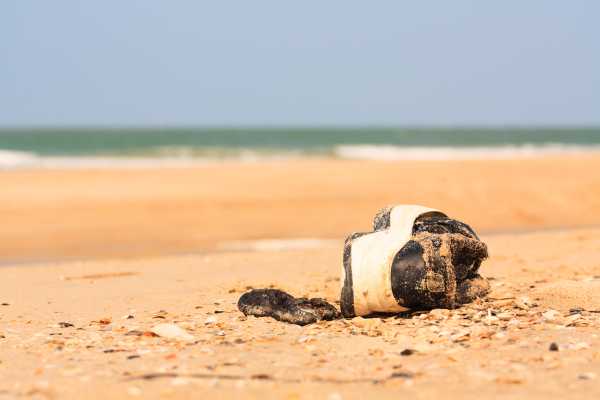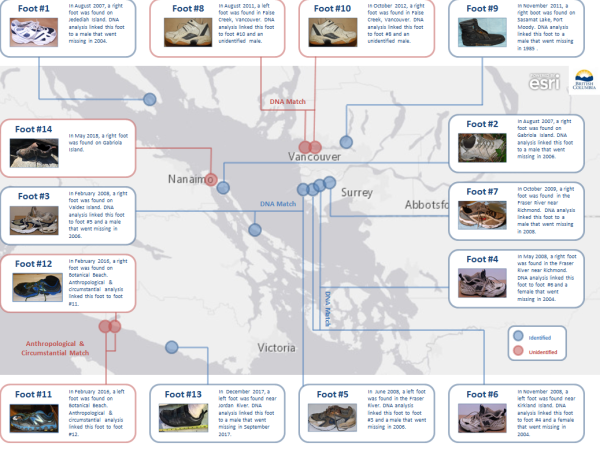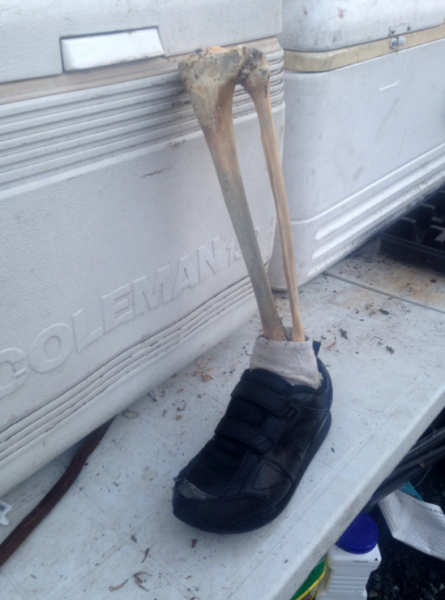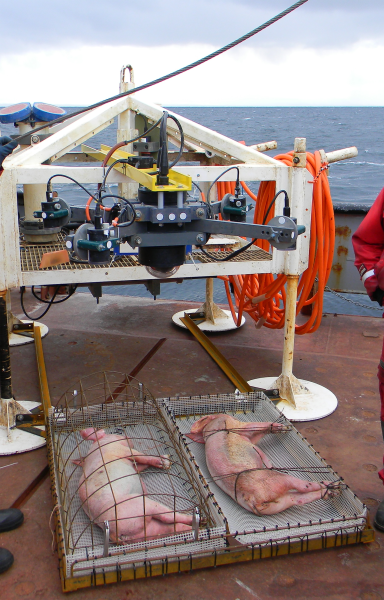
Umair Irfan is a correspondent at Vox writing about climate change, Covid-19, and energy policy. Irfan is also a regular contributor to the radio program Science Friday. Prior to Vox, he was a reporter for ClimateWire at E&E News.
Yet another disembodied human foot in a shoe has washed up on a beach along the Salish Sea in the Pacific Northwest.
The British Columbia Coroners Service confirmed this week to the Times Colonist that a shoe found on Gonzales Beach near Victoria, British Columbia in July contained human remains.
Officials said an investigation is underway and declined to give further details. But the lone foot in a shoe joins more than a dozen in recent years that have floated ashore in the region.
On New Year’s Day in 2019, beachgoers found a foot ensconced in a boot at the south end of Jetty Island in Everett, Washington. The foot was traced to a man that had been missing since 2016. The year prior, a man found a lone right foot wearing a hiking boot wedged between logs on Gabriola Island near Vancouver.
The year before that, someone found a foot wearing a black velcro athletic shoe with the tibia and fibula still attached along a different beach in British Columbia. That foot was traced to Stanley K. Okumoto, who was 79 when he went missing in September 2017.
It turns out that severed feet washing up on this coastline is, in fact, A Thing. It’s been a source of fascination for Canadians, Americans, and the media for years. It even has a dedicated Wikipedia page. The British Columbia Coroners Service, the people you call if you happen upon a disembodied foot, even put together this handy map of where shoes washed up, though it doesn’t include the latest finds:

Though morbid and grisly, there is nothing sinister about these finds, according to scientists and health officials. They aren’t the handiwork of a serial killer or the remains of plane crash victims, as some have proposed. Instead, several innocent scientific phenomena converge to periodically deposit human feet on the shores of the Salish Sea, the body of water between Vancouver and Seattle that includes Puget Sound and the Strait of Georgia.
Severed feet routinely wash ashore in the Pacific Northwest due to several converging natural causes
Officials on both the US and Canadian sides of the border are pretty blasé about the whole thing.
“The BC [British Columbia] Coroners Service has been able to identify eight of the previous 12 feet, belonging to six individuals,” the agency said in a statement. “In none of the cases was any foul play involved.”
For starters, there are simply a lot of corpses in these waters. Kathy Taylor, a former forensic anthropologist at the King County Medical Examiner’s Office, which has jurisdiction along the Seattle-Tacoma coast of Puget Sound, told Vox in 2017 that this is a consequence of having a densely populated area on the coast (Taylor died in 2021). The metro area along the shores of the Salish Sea is home to more than 8.7 million people.
Suicides and drownings are somewhat regular events when people gather around any body of water, and as shoreline populations go up, the number of water mishaps also increases. Coastal metropolises like New York City regularly go through the grim ritual of fishing floating corpses out of the water in the spring as water temperatures rise.
But why do body parts so often end up on the shores of the Salish Sea and not around other coastal regions, like the San Francisco Bay Area? Parker MacCready, an oceanography professor at the University of Washington, said the story is simple. “Things that float at the ocean surface move with the currents, but also are pushed a bit by the wind, and this can be significant in getting them to shore,” he wrote in an email. “The prevailing winds here [around the Salish Sea] are west to east, and so floating stuff in this part of the Pacific gets blown to the coast effectively.”
That said, severed feet also occasionally wash up around other waterways. In 2018, a lone foot wearing a sneaker was found in a dumpster next to a boat ramp on the Willamette River near Portland, Oregon. In 2017, a foot wearing an athletic shoe was found on a dock in Charleston, South Carolina, and hikers found a foot inside a tennis shoe on the banks of the Mississippi River near St. Louis, Missouri.
We’ve seen this happen occasionally in other parts of the world too: Body parts including a foot washed up in Rio de Janeiro, near the beach volleyball courts before the 2016 Olympics. Body parts of tourists also washed up on a beach in Fiji in 2016.
And why feet?
It turns out that in water, human bodies naturally disarticulate, or come apart at the joints, so hands and feet often disconnect from corpses after soaking in the ocean for a while.
“Feet easily disarticulate and when they are attached to a flotation device such as a running shoe, they are easily washed ashore,” wrote Gail Anderson, co-director of the Center for Forensic Research at Simon Fraser University in British Columbia, in an email. “Notice there are no feet washing ashore in stiletto heels or flip-flops. Also, today’s running shoes are much more buoyant than in the past.”
Tennis shoes also keep decaying feet in a neat package rather than letting toes and heels disperse, and footwear protects feet from hungry sea creatures, which end up gnawing on other exposed areas like ankles instead.
“[A]rthropods will skeletonize and disarticulate a body quite quickly depending on oceanic conditions,” Anderson wrote.

This image contains sensitive or violent content Tap to display
Anderson found this out in a 2016 study using pig carcasses immersed in the Salish Sea to approximate a human body. Previous studies reported that a corpse could survive for weeks, even months, intact underwater. However, Anderson concluded that the well-oxygenated waters of the Strait of Georgia support a vast amount of aquatic life that in turn could skeletonize a carcass in less than four days.

Though shoes keep severed feet intact, tracing them to their original owners has proven difficult
“The ones I have seen are not fresh feet,” King County’s Taylor said dryly. “They’ve been in the water for a long time, with significant decomposition.”
Often, DNA is too damaged to test from the days or weeks spent in salt water, and usually there is nothing to compare the DNA to since most of the people whose final resting place is the sea don’t have genetic material on record. Other potentially identifying marks like scars and tattoos are lost to the briny deep, as scarcely more than bone and ribbons of flesh return to shore.
Taylor said she is advocating for shoe size to be included in standard missing person reports, a detail that could help identify the next foot that turns up.
As for why we’re noticing more reports of these feet on beaches, Taylor said it’s partly due to the media keeping people on their toes, so now beachgoers investigate whether a lone sneaker has a foot in it.
“The reason it’s become a phenomenon is it’s gotten a lot of press,” she said. “Now people are checking.”
And of course, we in the media gleefully jump in with both feet when a story like this crops up. Officials say that people who encounter human remains should contact the police or the local coroner’s office and avoid touching them.
Update, August 23, 2023: This story, originally published in 2017, has been updated several times as new feet have been found along the coast of the Salish Sea.
Sourse: vox.com






